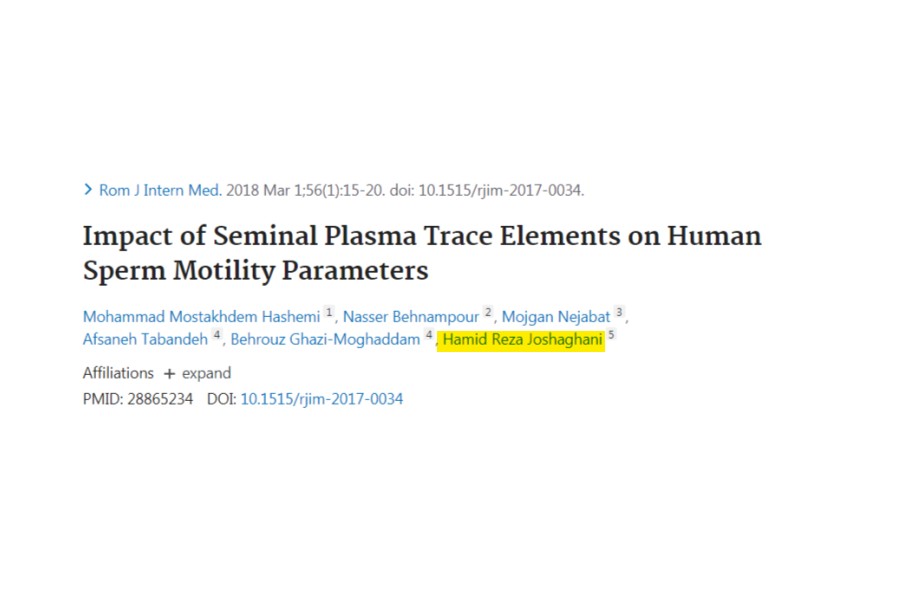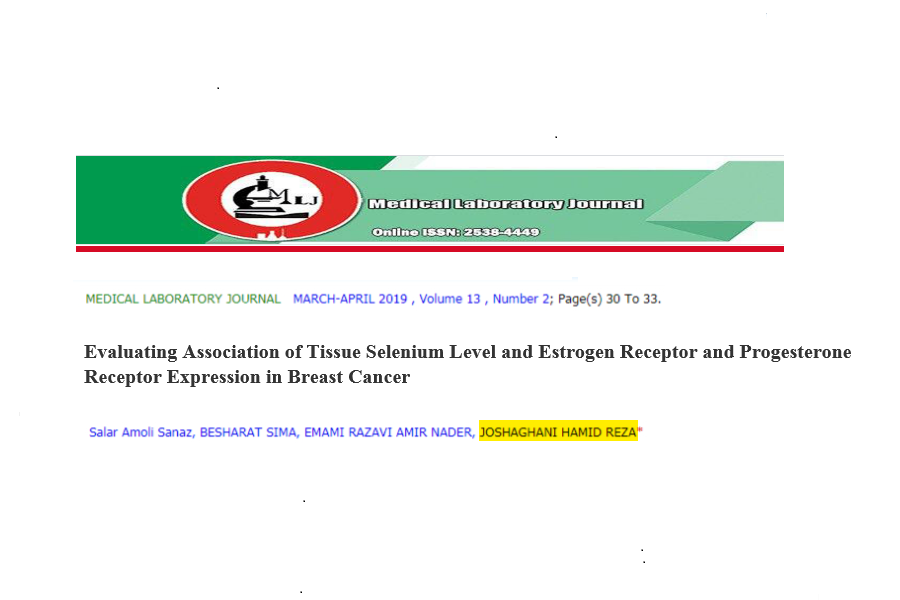تأثیر عناصر کمیاب پلاسمای سمینال بر پارامترهای حرکتی اسپرم انسان
Abstract
Introduction: Human seminal plasma contains a variety of macro and trace elements including magnesium (Mg), copper (Cu), zinc (Zn), and iron (Fe) that have essential roles in normal functioning of semen and its quality. The imbalance of these elements has been reported in several pathologic and male infertility disorders. Therefore, this study aimed to determine the levels of these elements in seminal plasma samples, their relationships with each other and their impact on sperm motility.
Methods: Overall, 192 males (96 normospermic and 96 asthenospermic males) were enrolled in the study. Semen samples were collected by masturbation and computer-assisted/aided semen analysis of sperm motility was performed. The samples were centrifuged and seminal levels of Mg, Cu, Zn and Fe were measured using atomic absorption spectroscopy.
Results: The levels of Zn did not differ between the two groups, while the levels of Mg, Cu, and Fe were significantly higher in normospermic males. Fe showed a positive correlation with Mg and Cu in asthenospermic group. However, a negative relationship was found between Mg and Fe levels and between Mg and sperm concentration in the normospermic group. Fe levels were higher in the normospermic group compared to the asthenospermic group. Nevertheless, increased Fe levels caused a decrease in most of sperm motility fractions.
Conclusion: Elements play major roles in male fertility and directly affect sperm quality. According to the results of this study, the levels of Zn do not affect the sperm quality and motility, while Fe, Cu and Mg are decreased in males with sperm motility problems. Nevertheless, Fe levels can adversely affect sperm motility in normospermic men.




پاسخ دهید
میخواهید به بحث بپیوندید؟مشارکت رایگان.